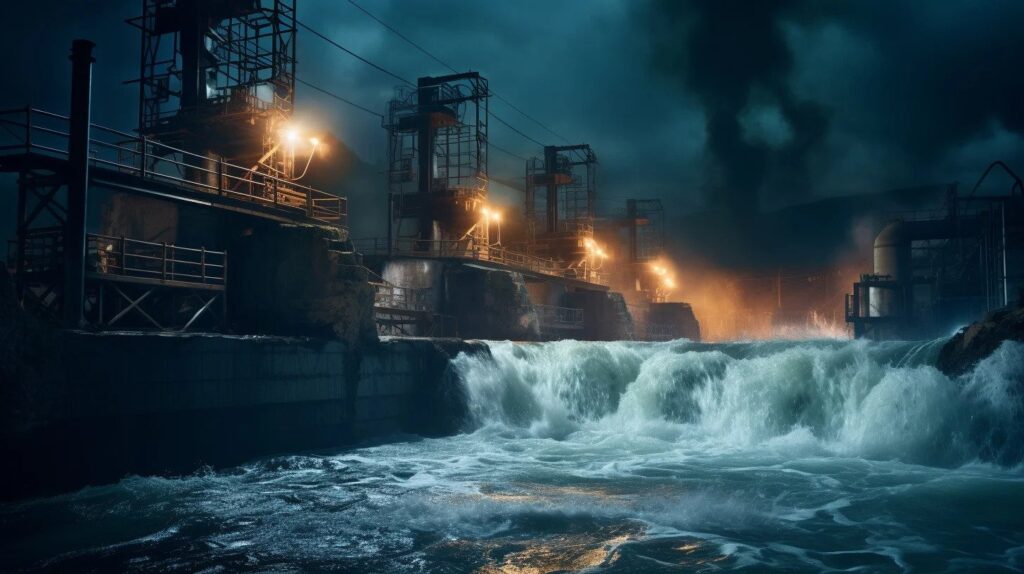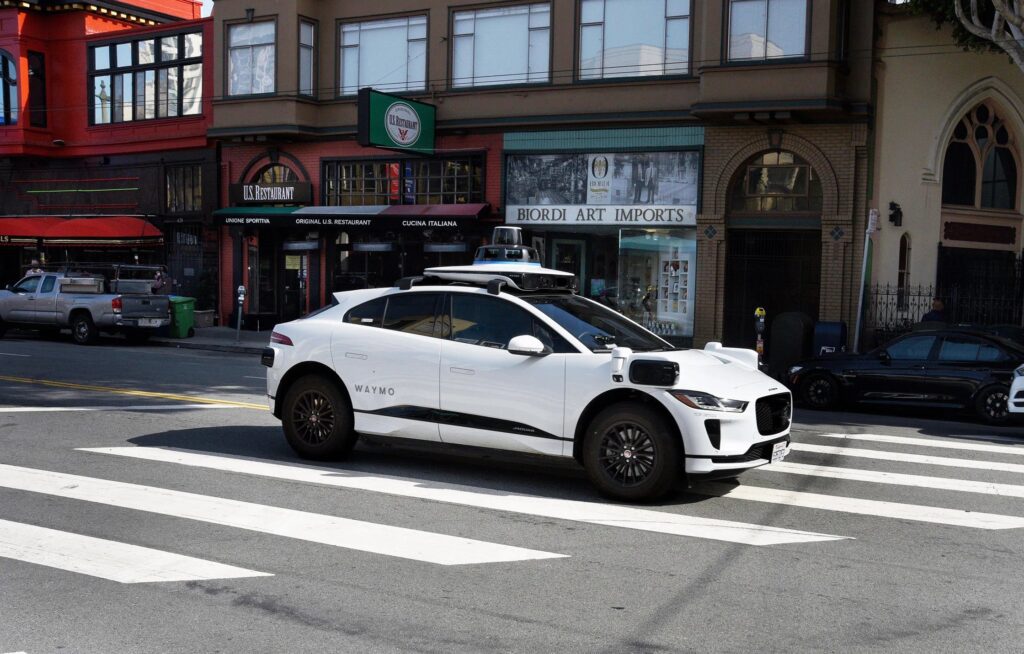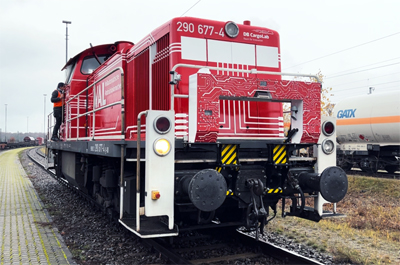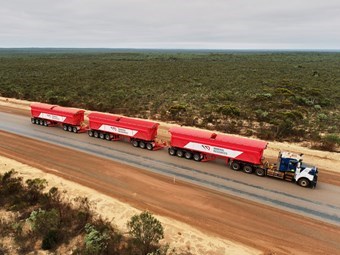
Vueron Newsletter
No. 39
2023.08.15
| Innovusion Plans IPO in the United States for Global Expansion | ||
| Robotaxis Can Now Work the Streets of San Francisco 24/7 | ||
| Malfunctioning Self-Driving Taxis Cause Chaos in San Francisco | ||
| Autonomous Road Train Coming to Western Australia |
1. Innovusion Plans IPO in the United States for Global Expansion
-
- Innovusion, a LiDAR supplier for electric vehicle manufacturer NIO, is considering an IPO on Nasdaq, as confirmed by the China Securities Regulatory Commission (CSRC).
The CSRC announced that Innovusion is contemplating the issuance of up to 21,382,252 ordinary shares for listing. - Innovusion, founded in 2016, has research and development centers in Silicon Valley, Suzhou, and Shanghai. It operates advanced LiDAR manufacturing facilities in Ningbo and Suzhou.
- Innovusion’s LiDAR technology is crucial for autonomous driving capabilities and has gained significant traction in the industry. NIO introduced vehicles equipped with Innovusion’s LiDAR products in March 2022.
- New regulations introduced by the CSRC in 2021 require Chinese companies seeking US IPOs to engage with their home regulators, enhancing transparency and reducing risks for investors.
- While specific IPO details are undisclosed, Innovusion has received substantial funding, including a $30 million Series A funding led by NIO Capital in 2018, $64 million in Series B funding in May 2021, and $66 million in Series B+ funding in August 2021.
- The IPO aligns with a trend of Chinese firms seeking listings on US exchanges to access global capital while facing increased scrutiny for transparency and investor confidence.
- Innovusion, a LiDAR supplier for electric vehicle manufacturer NIO, is considering an IPO on Nasdaq, as confirmed by the China Securities Regulatory Commission (CSRC).

Innovusion’s decision to pursue an IPO on Nasdaq reflects a broader trend of Chinese companies seeking listings on US exchanges to access global capital markets. However, recent regulatory changes highlight the increased scrutiny and regulatory challenges Chinese companies may face when listing in the US.
2. Robotaxis Can Now Work the Streets of San Francisco 24/7
-
- The California Public Utilities Commission (CPUC) has approved all-day paid robotaxi services in San Francisco, allowing Cruise and Waymo to operate fleets of self-driving cars.
- The decision was made after a 3-1 vote following a six-hour public comment session and objections from San Francisco officials and residents who expressed concerns about safety and readiness.
- The driverless cars have faced challenges such as freezing on streets, creating traffic disruptions, and occasional difficulties interpreting traffic conditions.
- Cruise and Waymo claim these issues are infrequent and that their technology is the safest way to handle unusual situations.
- The CPUC’s approval is seen as a significant step for Cruise and Waymo in transitioning from technology development to a viable business model, despite previous losses for General Motors on Cruise.
- The approved robotaxi services have no limits on fleet size, and the companies have not disclosed the number of robotaxis they plan to operate in San Francisco.
- The CPUC’s resolution suggests pushing for updated data collection requirements from the companies, including information on unplanned stops and interactions with first responders.
- Cruise and Waymo already operate driverless ride-hailing services in Phoenix, Arizona, and are planning expansions into other cities.
- Critics have voiced concerns over safety, transparency, and potential job disruption for professional drivers.
- Despite the approval, opposition from city representatives and concerns about self-driving technology’s impact on city infrastructure and safety persist.

The CPUC’s approval marks a significant milestone for the self-driving car industry, allowing companies like Cruise and Waymo to take steps toward transforming their technology into a commercial, revenue-generating service. The decision underscores the ongoing debate about the readiness and safety of self-driving cars for public use. While proponents highlight benefits like reduced accidents caused by human error, opponents raise concerns about the technology’s ability to handle complex and unpredictable urban environments.
3. Railergy selects Aeva to enable autonomous train technology
-
- Aeva, a sensing and perception systems developer, has partnered with Railergy, a German supplier of railway automation solutions, to integrate Aeva’s Frequency Modulated Continuous Wave (FMCW) 4D lidar technology into Railergy’s automatic train operation solution.
- Aeva’s Aeries II lidar sensors are used to provide crucial velocity data and sensing capabilities for identifying obstacles that could hinder the safe operation of autonomous trains.
- Railergy’s system focuses on automating trains for shunting applications, enabling locomotives to operate autonomously for tasks such as train separation, movement, and linking. The solution is also applicable to main line and last mile scenarios, including seaports, freight, and mining operations.
- Aeva’s 4D lidar technology is chosen by Railergy due to its ability to simultaneously detect precise range and velocity of small obstacles on and around the railway tracks. The instant velocity data supports real-time object segmentation and powers Aeva’s Ultra Resolution perception capabilities for higher resolution sensing.
- Aeva’s CEO, Soroush Salehian, emphasized the significance of these developments and the company’s focus on leveraging its FMCW technology for next-generation automation.

Aeva’s collaboration with Railergy demonstrates the growing integration of advanced sensing technology, like FMCW lidar, in the rail industry. The technology’s ability to provide precise velocity and range data helps enhance the safety and efficiency of autonomous train operations, making rail transportation more reliable and sustainable.
4. Malfunctioning Self-Driving Taxis Cause Chaos in San Francisco
-
- Expansion of self-driving taxis in San Francisco led to chaos as malfunctioning vehicles caused traffic congestion and delays in a busy bar and restaurant area.
- The incident occurred right after state regulators approved the increased use of autonomous vehicles by major players Cruise and Waymo for paid rides at all hours in the city.
- Local officials had previously expressed safety concerns and opposed the expansion of self-driving taxis in San Francisco.
- Malfunctioning self-driving taxis from Cruise caused traffic blockages, including emergency vehicles, in the North Beach neighborhood. Up to ten Cruise driverless cars stopped working simultaneously.
- Eyewitnesses reported significant traffic queues and delays due to the malfunctioning vehicles, highlighting challenges and concerns associated with autonomous technology.
- Despite state regulatory approval, this incident raises questions about the reliability and safety of self-driving vehicles, prompting discussions about how to address such issues.
- The incident emphasizes that, despite advances in self-driving technology, there are still significant hurdles to overcome for the smooth and safe integration of autonomous vehicles into urban environments.

The malfunctioning of multiple self-driving taxis highlights that even with regulatory approval, technical glitches can disrupt the operations of autonomous vehicles. It underscores the complexity of ensuring that self-driving technology functions reliably and seamlessly in real-world scenarios.
5. Autonomous Road Train Coming to Western Australia
-
- Mineral Resources (MinRes) is set to introduce a groundbreaking initiative of deploying a fleet of 120 completely self-driving road trains for the Onslow Iron project in Western Australia.
- The road trains will be equipped with an autonomous haulage system developed by experts at Hexagon AB, combining technological expertise with operational insights for potential advantages.
- Collaboration aims to eliminate driver fatigue, increase fleet availability, reduce operating costs, lower fuel consumption, and decrease emissions.
- A central operating center in Onslow will control the fleet, and MinRes is developing an AI-powered monitoring system for enhanced management.
- Safety is a key focus, with grade separation ensuring no interaction between autonomous road trains and vehicles on public roads.
- The autonomous road trains are part of a cost-effective and dust-free supply chain, unlocking previously undeveloped iron ore deposits in the West Pilbara.
- Each triple-trailer vehicle will carry 330 tonnes of iron ore over 150 km on a dedicated private haul road to the Port of Ashburton.
- The project is a cornerstone of MinRes’ strategy for low-cost, long-life iron ore operations, targeting shipping around 35 million tonnes of iron ore annually from mid-2024.
- Hexagon President and CEO Paolo Guglielmini highlights the broader potential of such solutions in improving safety, sustainability, and productivity in various industries beyond mining.

The partnership between MinRes and Hexagon highlights the importance of collaboration between technology providers and industry players to bring innovative solutions to market. Such collaborations drive industry-wide progress and adoption of cutting-edge technologies. The success of this initiative could pave the way for similar deployments in other mining projects and industries, showcasing the scalability and versatility of autonomous technology across various sectors beyond mining and transportation.
*Contents above are the opinion of ChatGPT, not an individual nor company

